Incunabula page | Decorated page from: Incipit rationale, published in 1479, 2 pp.
Page from an early edition of the: “Incipit rationale diuinorum officiorum guilhelmi minatensis ecclesie episcopi” by Guilelmus Durantis (1230-1296), a French canonist and liturgical writer, and Bishop of Mende, published by Georg Husner in Strasbourg in 1479.
The invention of the mechanized printing press in the 15th century revolutionized the way books were produced, dramatically increasing the number and variety of works to be published and distributed to awaiting readers. As a term, Incunabulum first appeared in English in the 19th century, referring retroactively to those books produced in the first decades of printing press technology – specifically those printed before the year 1501, a date that appears to have been determined only arbitrarily. In Latin incunabulum is singular of “incunabula,” which translates literally to “swaddling clothes” or “bands holding the baby in a cradle.” The “baby” in this case is a figurative one, referring to a book that was produced when the art of printing was still in its infancy.
On this page, the capital D of the last paragraph is decorated with a floreal motif, in many different colors.
With another page from a similar incunabula, possibly from 1491, titled above: In cathedra Sancti Petri.
Incunabel – Incunabelen – versierde tekst – middeleeuws blad
SKU: K80203
Page of inculabula, letterpress on paper; total: 295 x 196 mm; colored in blue, green, gold, white and brown; some smudges and minor defects due to handling, in elegant paper passepartout.
€ 484,00(€ 400,00


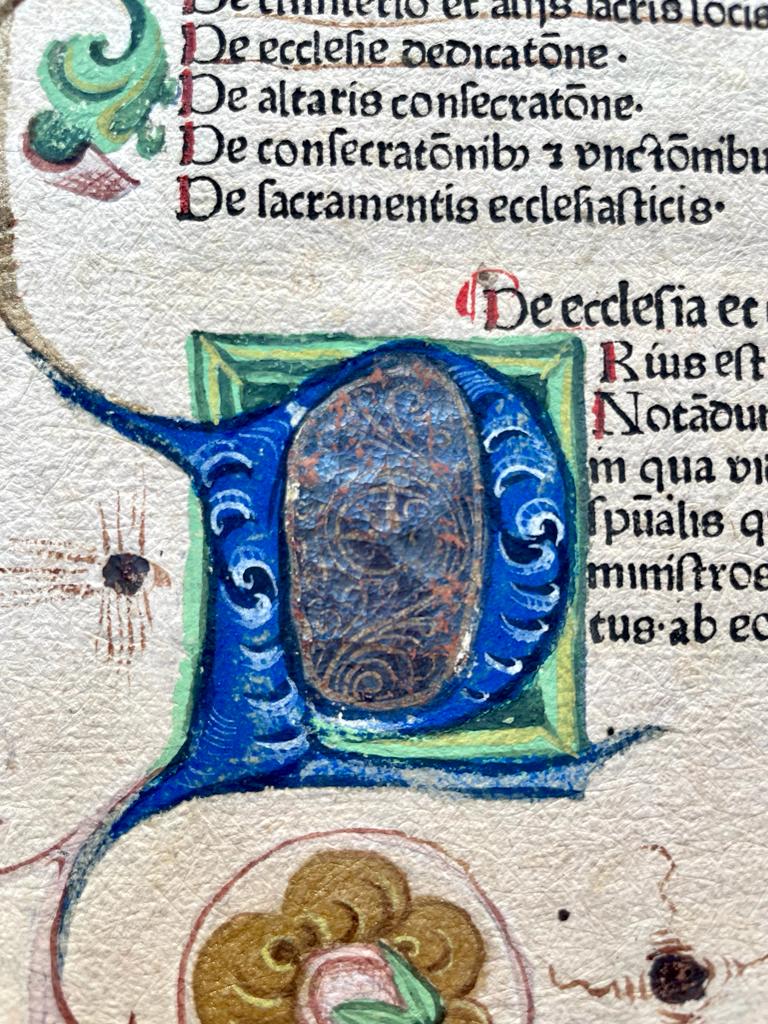
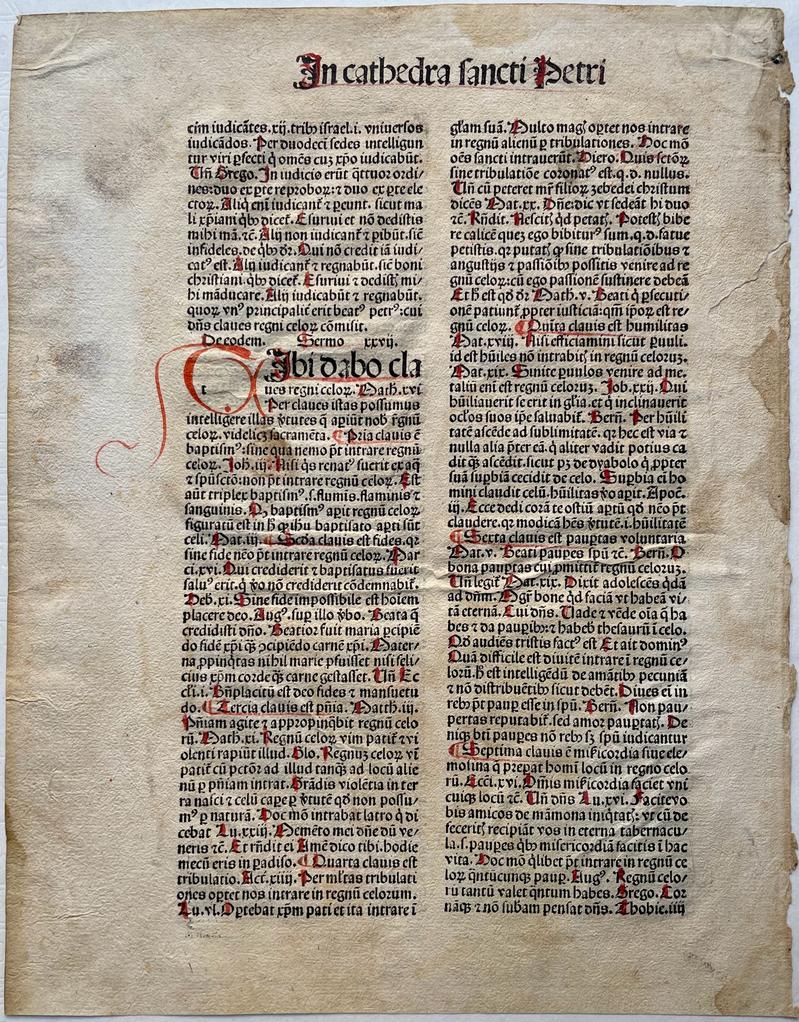
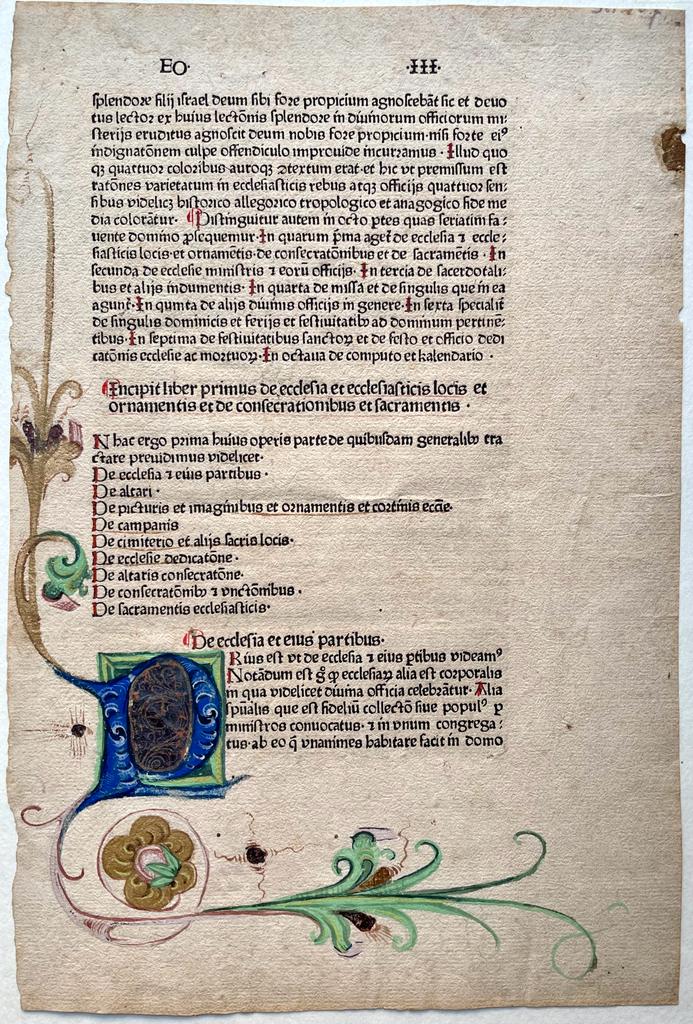
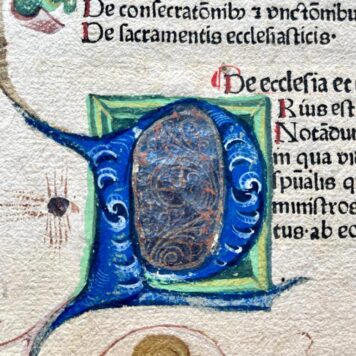


![[Antique title page, 1701] Historie der kerken en ketteren door Godfried Arnold, published 1701, 1 p.](https://arinevandersteur.nl/wp-content/uploads/27650_1-1-scaled-1-356x356.jpg)
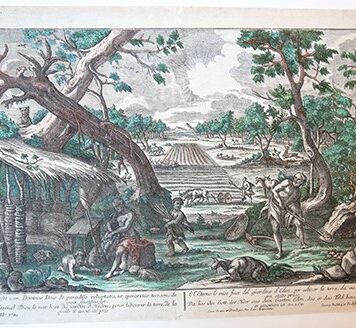
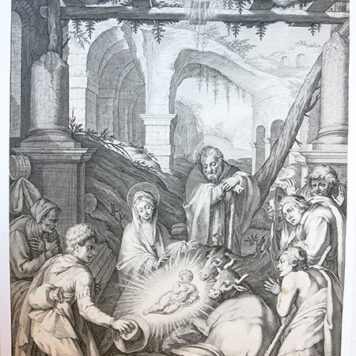
![[Antique print, engraving] Tobias with the angel catching the fish in the river Tigris, published 1600.](https://arinevandersteur.nl/wp-content/uploads/60379_1_2-356x336.jpg)

